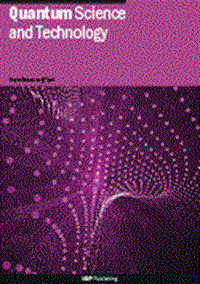Linear-optical protocols for mitigating and suppressing noise in bosonic systems
IF 5.6
2区 物理与天体物理
Q1 PHYSICS, MULTIDISCIPLINARY
引用次数: 0
Abstract
Quantum-information processing and computation with bosonic qubits are corruptible by noise channels. Using interferometers and photon-subtraction gadgets (PSGs) accompanied by linear amplification and attenuation, we establish linear-optical methods to mitigate and suppress bosonic noise channels. We first show that by employing amplifying and attenuating PSGs respectively at the input and output of either a thermal or random-displacement channel, probabilistic error cancellation (PEC) can be carried out to mitigate errors in expectation-value estimation. We also derive optimal physical estimators that are properly constrained to improve the sampling accuracy of PEC. Next, we prove that a purely-dephasing channel is coherently suppressible using a multimode Mach–Zehnder interferometer and conditional vacuum measurements (vacuum-based Mach–Zehnder scheme or the VMZ scheme). In the limit of infinitely-many ancillas, with nonvanishing success rates, VMZ using either Hadamard or two-design interferometers turns any dephasing channel into a phase-space-rotated linear-attenuation channel that can subsequently be inverted with (rotated) linear amplification without Kerr nonlinearity. Moreover, for weak central-Gaussian dephasing, the suppression fidelity increases monotonically with the number of ancillas and most optimally with Hadamard interferometers. We demonstrate the performance of these linear-optical mitigation and suppression schemes on common noise channels (and their compositions) and popular bosonic codes. While the theoretical formalism pertains to idling noise channels, we also provide numerical evidence supporting mitigation and suppression capabilities with respect to noise from universal gate operations.减轻和抑制玻色子系统噪声的线性光学协议
利用玻色子量子比特进行量子信息处理和计算容易受到噪声信道的干扰。利用干涉仪和伴随线性放大和衰减的光子减法器件(psg),我们建立了线性光学方法来减轻和抑制玻色子噪声通道。我们首先表明,通过在热通道或随机位移通道的输入和输出分别使用放大和衰减psg,可以进行概率误差抵消(PEC)以减轻期望值估计中的误差。我们还推导了适当约束的最优物理估计量,以提高PEC的采样精度。接下来,我们使用多模马赫-曾德干涉仪和条件真空测量(基于真空的马赫-曾德方案或VMZ方案)证明了纯减相通道是相干抑制的。在无限多支点的限制下,具有不消失的成功率,VMZ使用Hadamard或双设计干涉仪将任何减相通道转换为相空间旋转的线性衰减通道,随后可以通过(旋转)线性放大进行反转,而不存在Kerr非线性。此外,对于微弱的中心高斯去相,抑制保真度随安切点数量的单调增加而增加,并且在阿达玛干涉仪中效果最佳。我们展示了这些线性光学减缓和抑制方案在常见噪声信道(及其组成)和流行的玻色子编码上的性能。虽然理论形式与空转噪声通道有关,但我们也提供了数值证据,支持减轻和抑制通用门操作噪声的能力。
本文章由计算机程序翻译,如有差异,请以英文原文为准。
求助全文
约1分钟内获得全文
求助全文
来源期刊

Quantum Science and Technology
Materials Science-Materials Science (miscellaneous)
CiteScore
11.20
自引率
3.00%
发文量
133
期刊介绍:
Driven by advances in technology and experimental capability, the last decade has seen the emergence of quantum technology: a new praxis for controlling the quantum world. It is now possible to engineer complex, multi-component systems that merge the once distinct fields of quantum optics and condensed matter physics.
Quantum Science and Technology is a new multidisciplinary, electronic-only journal, devoted to publishing research of the highest quality and impact covering theoretical and experimental advances in the fundamental science and application of all quantum-enabled technologies.
 求助内容:
求助内容: 应助结果提醒方式:
应助结果提醒方式:


